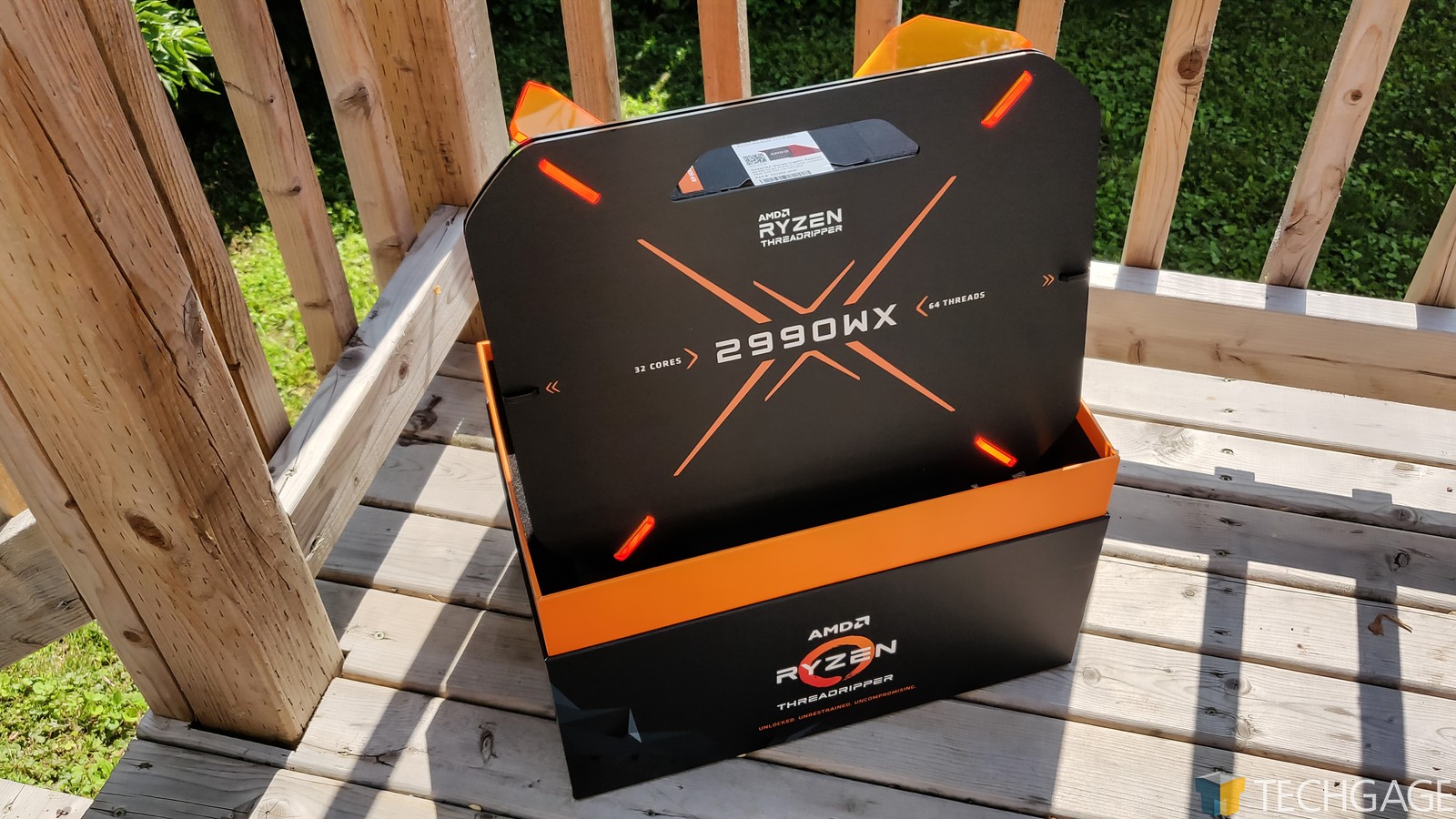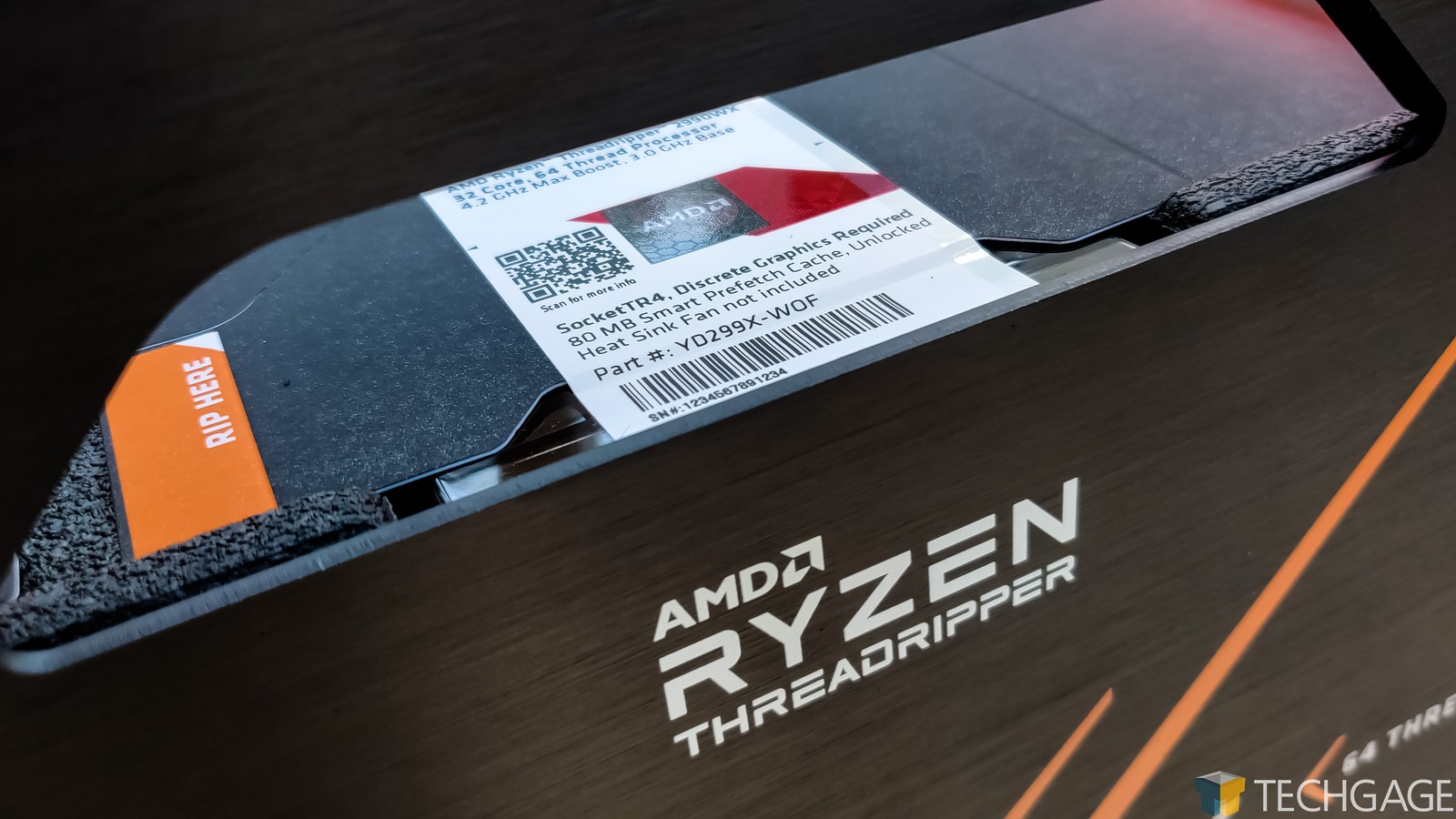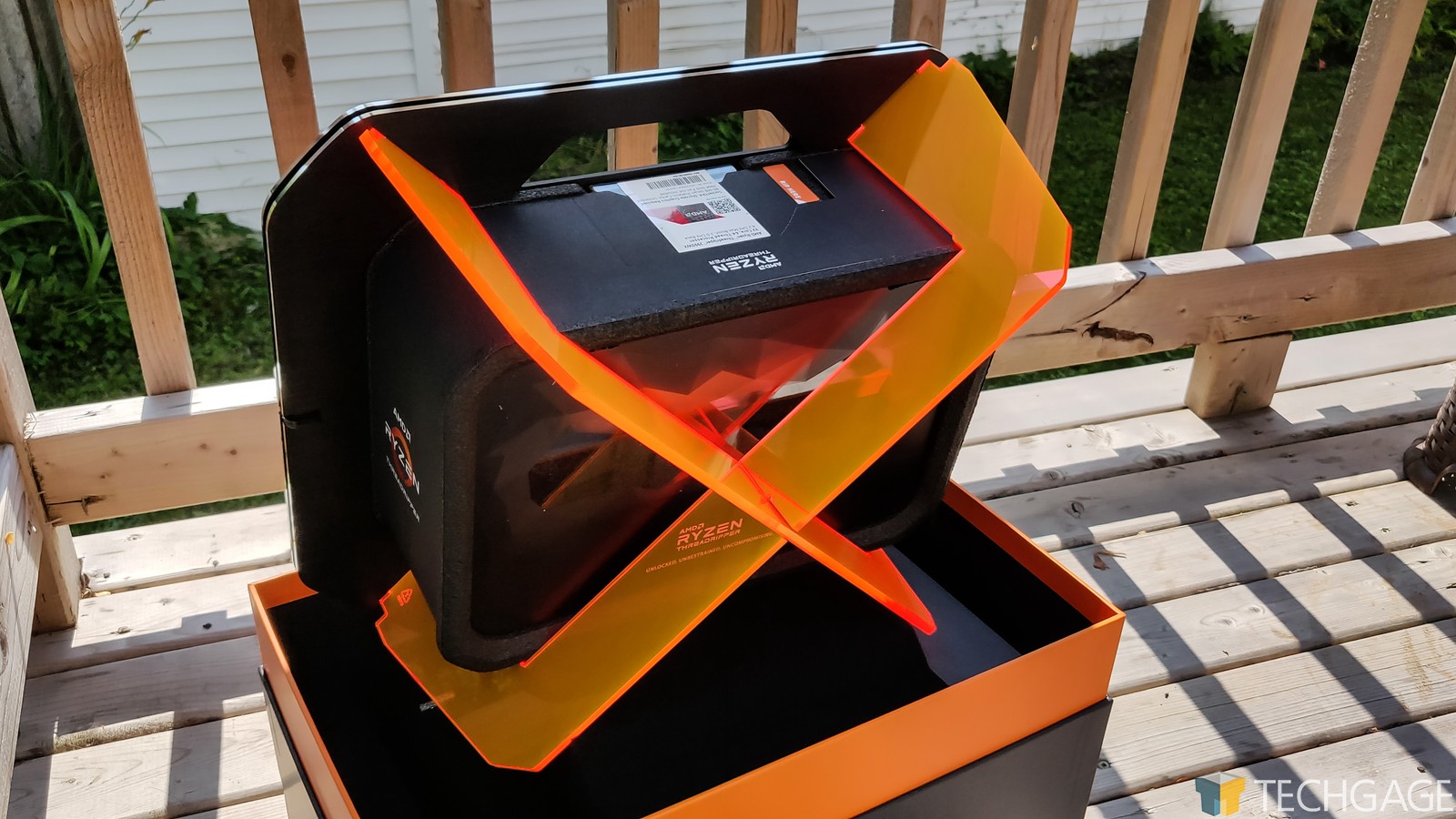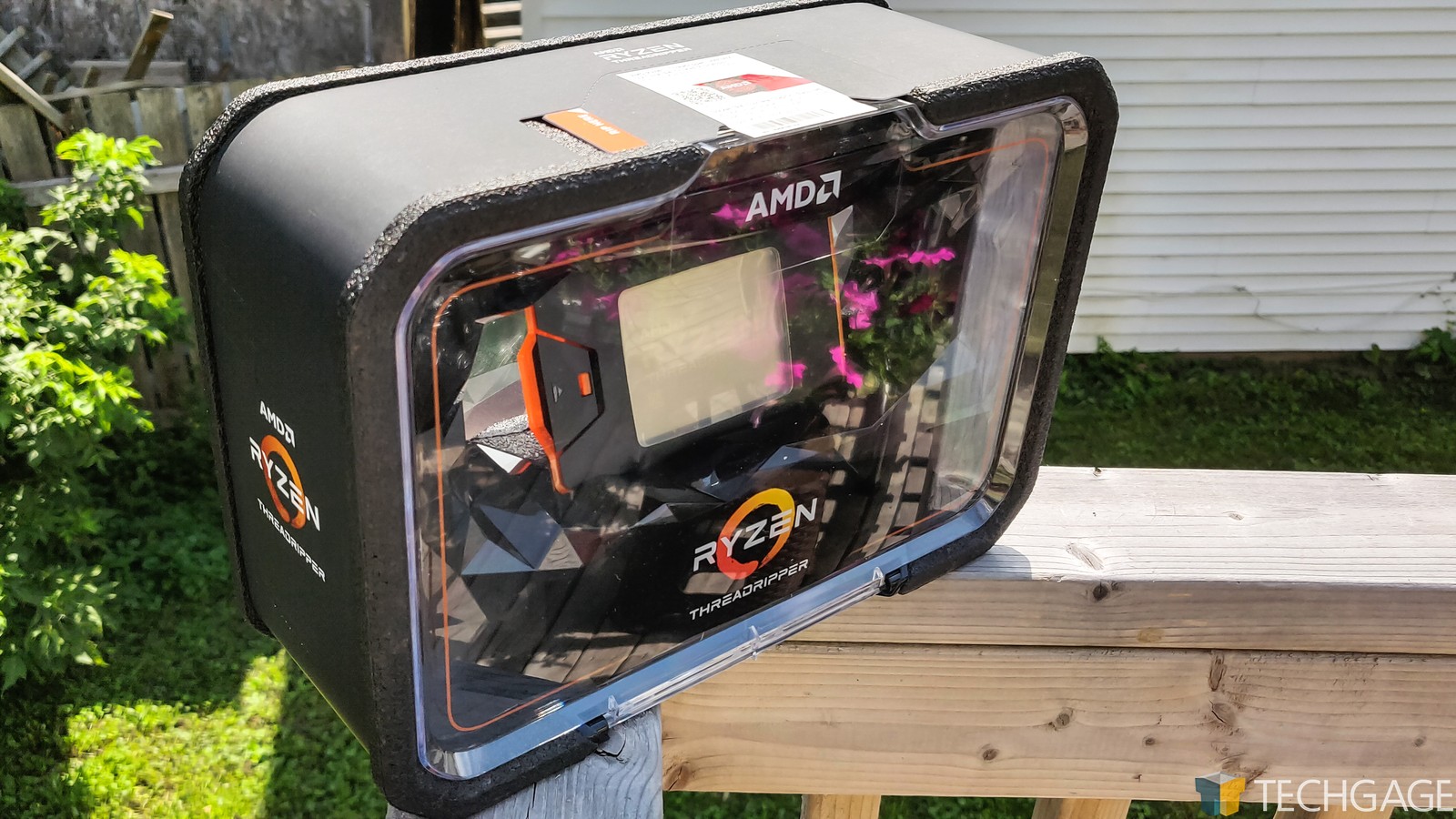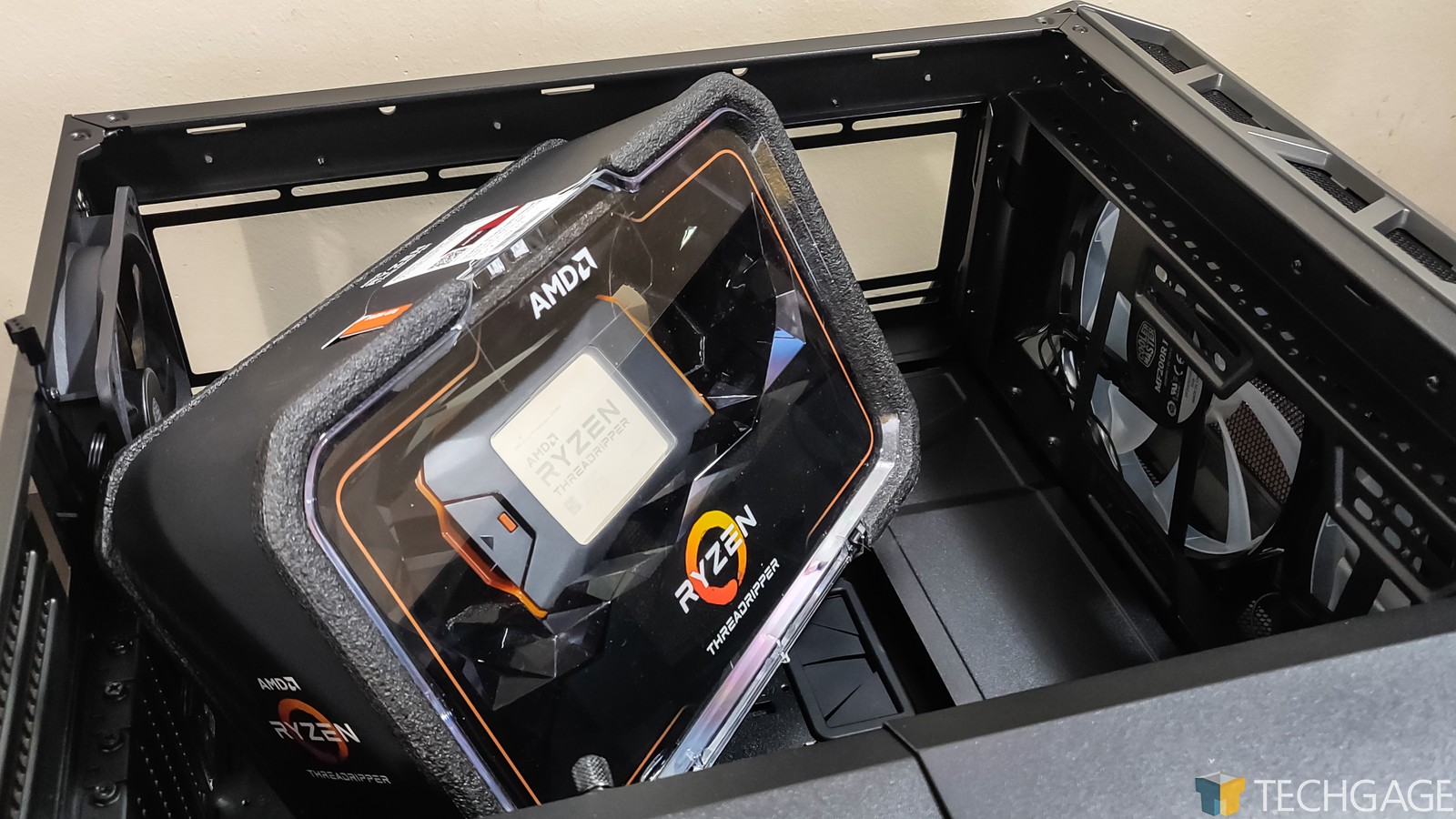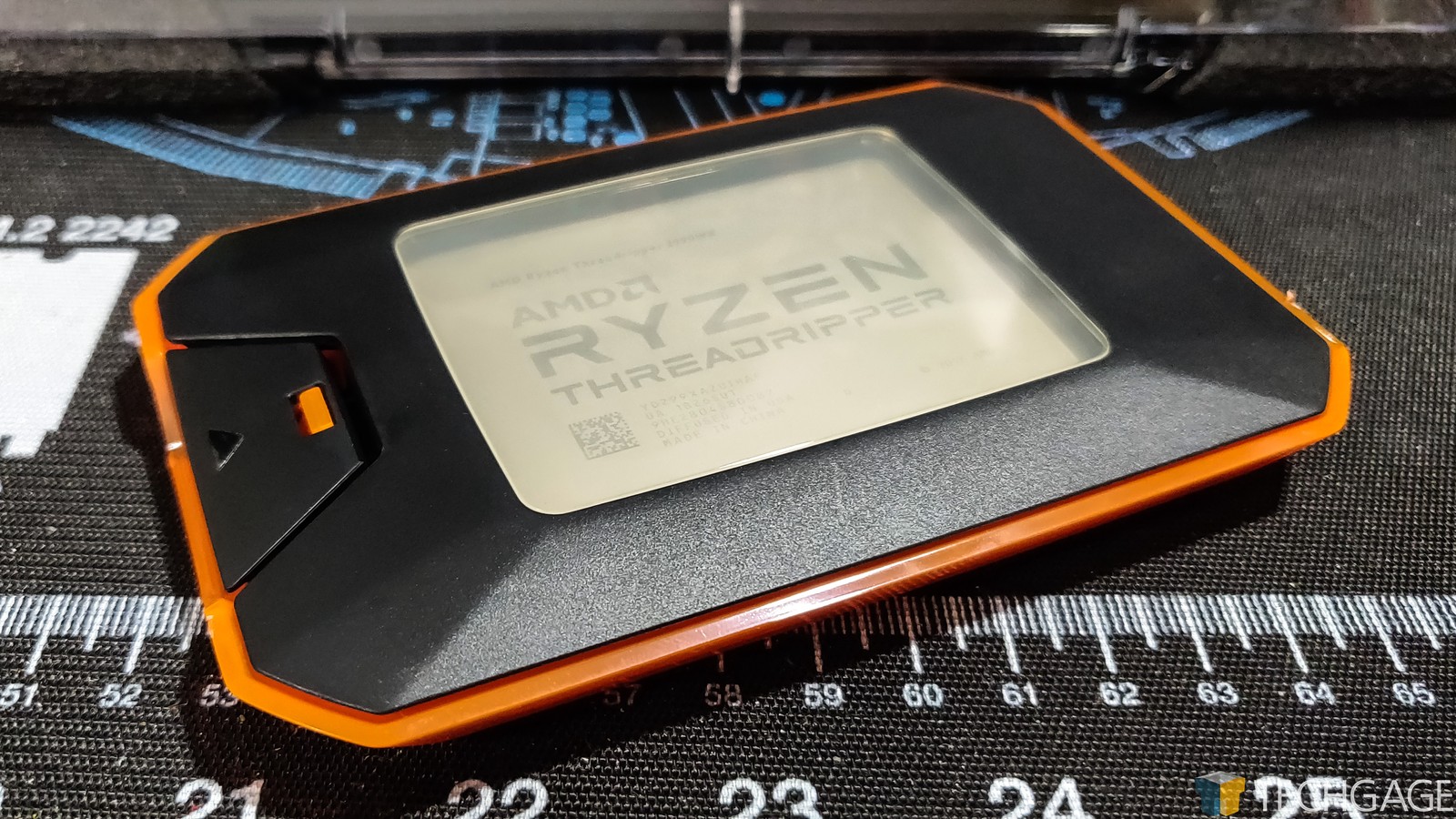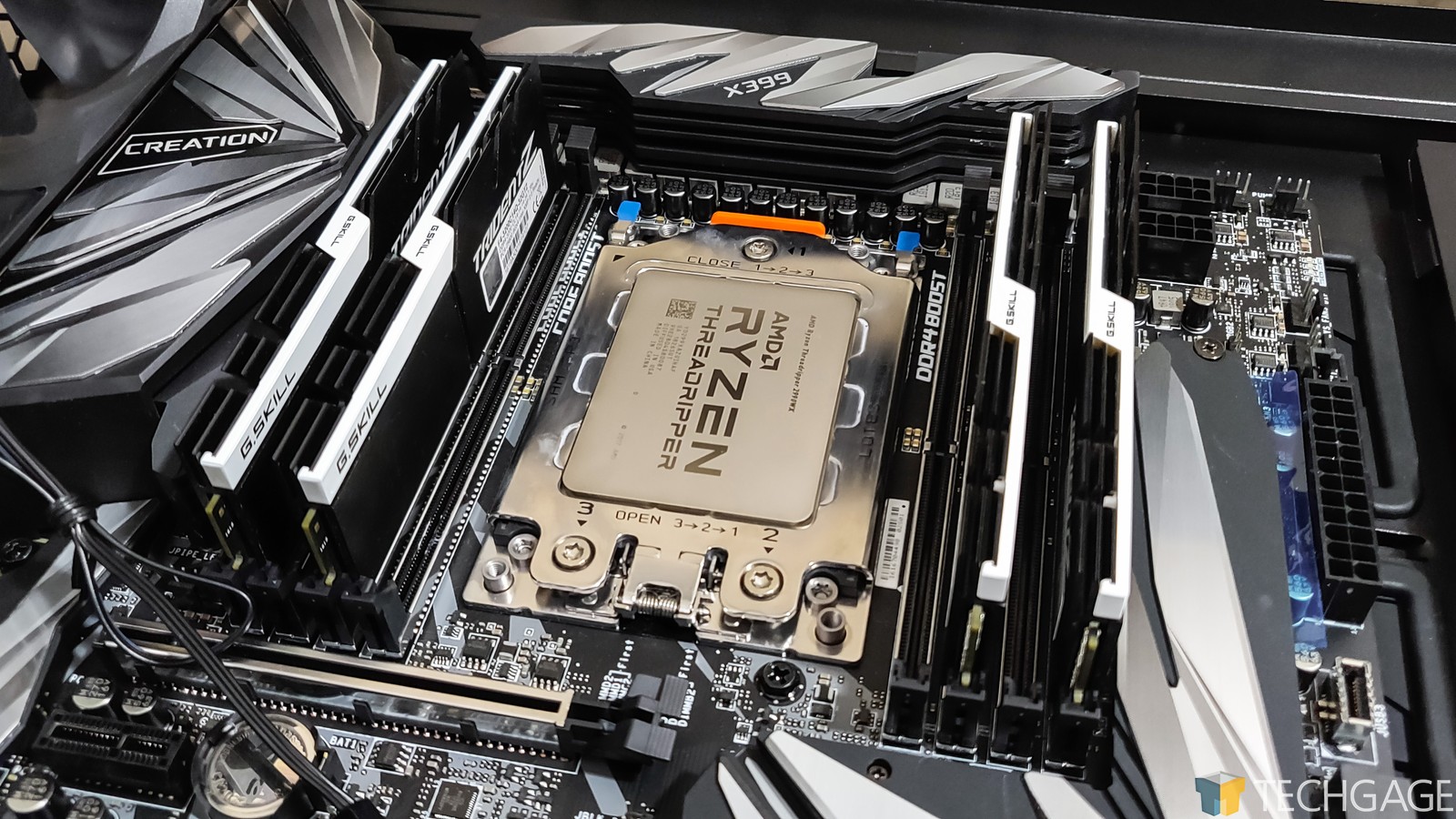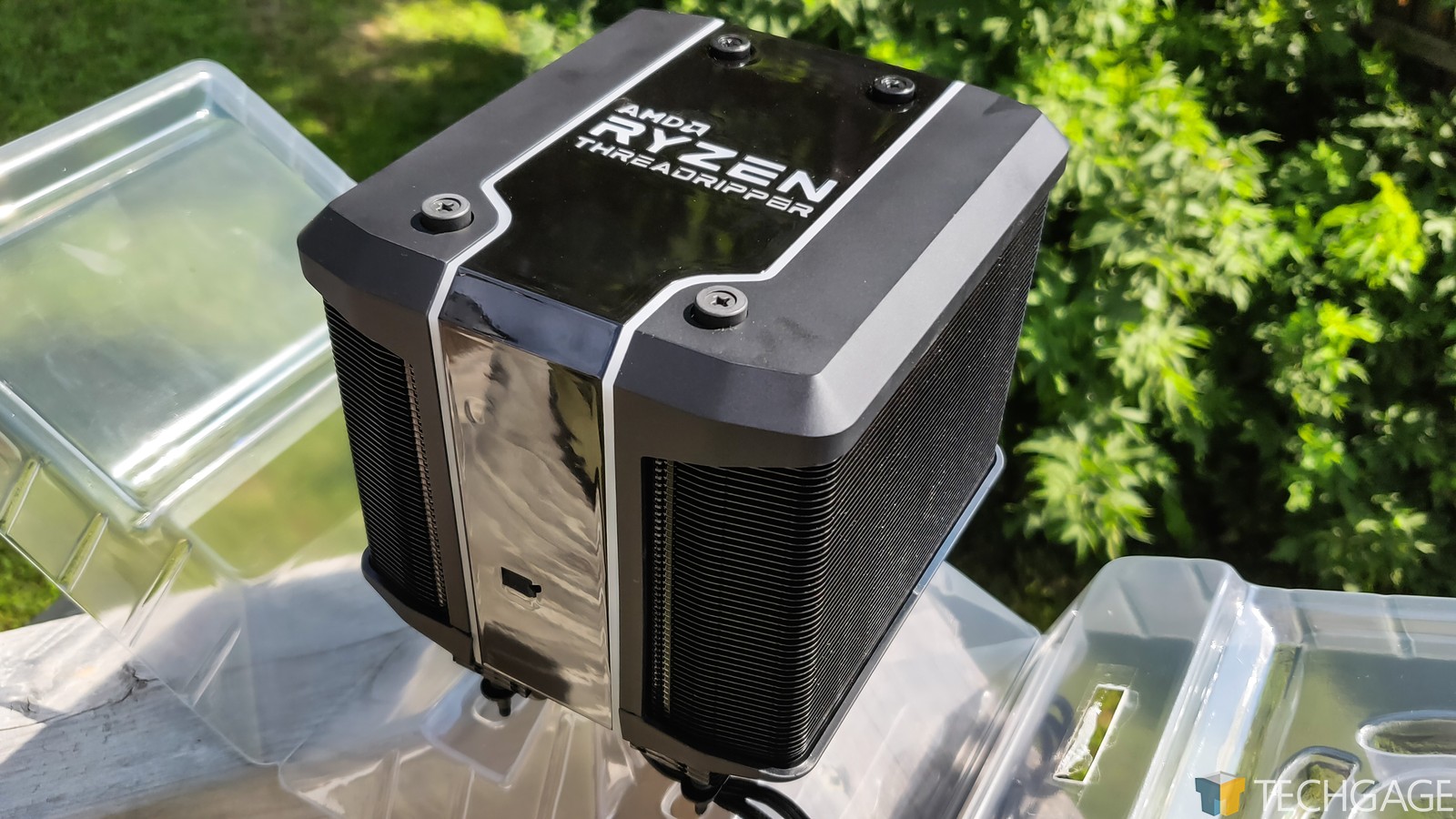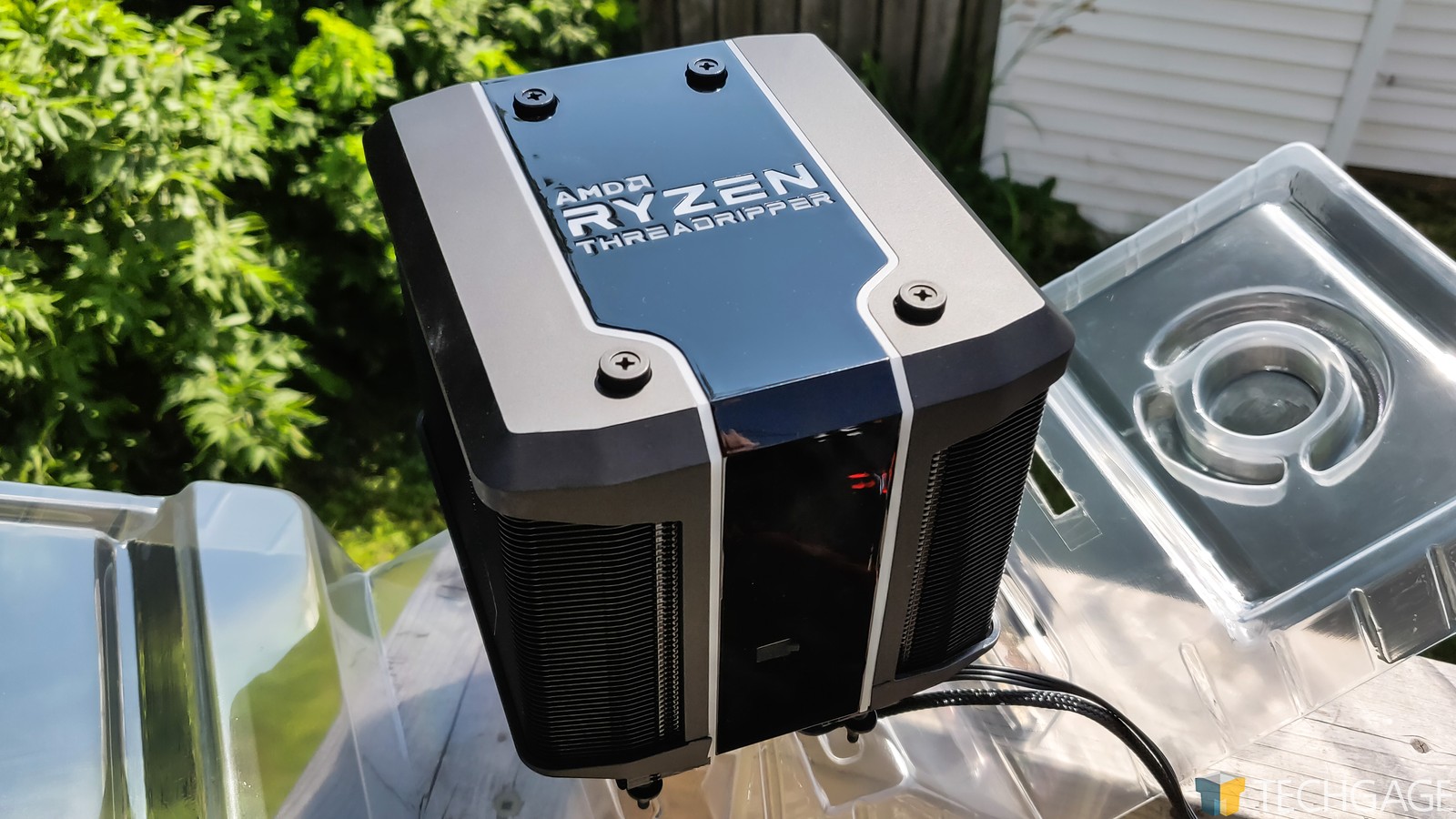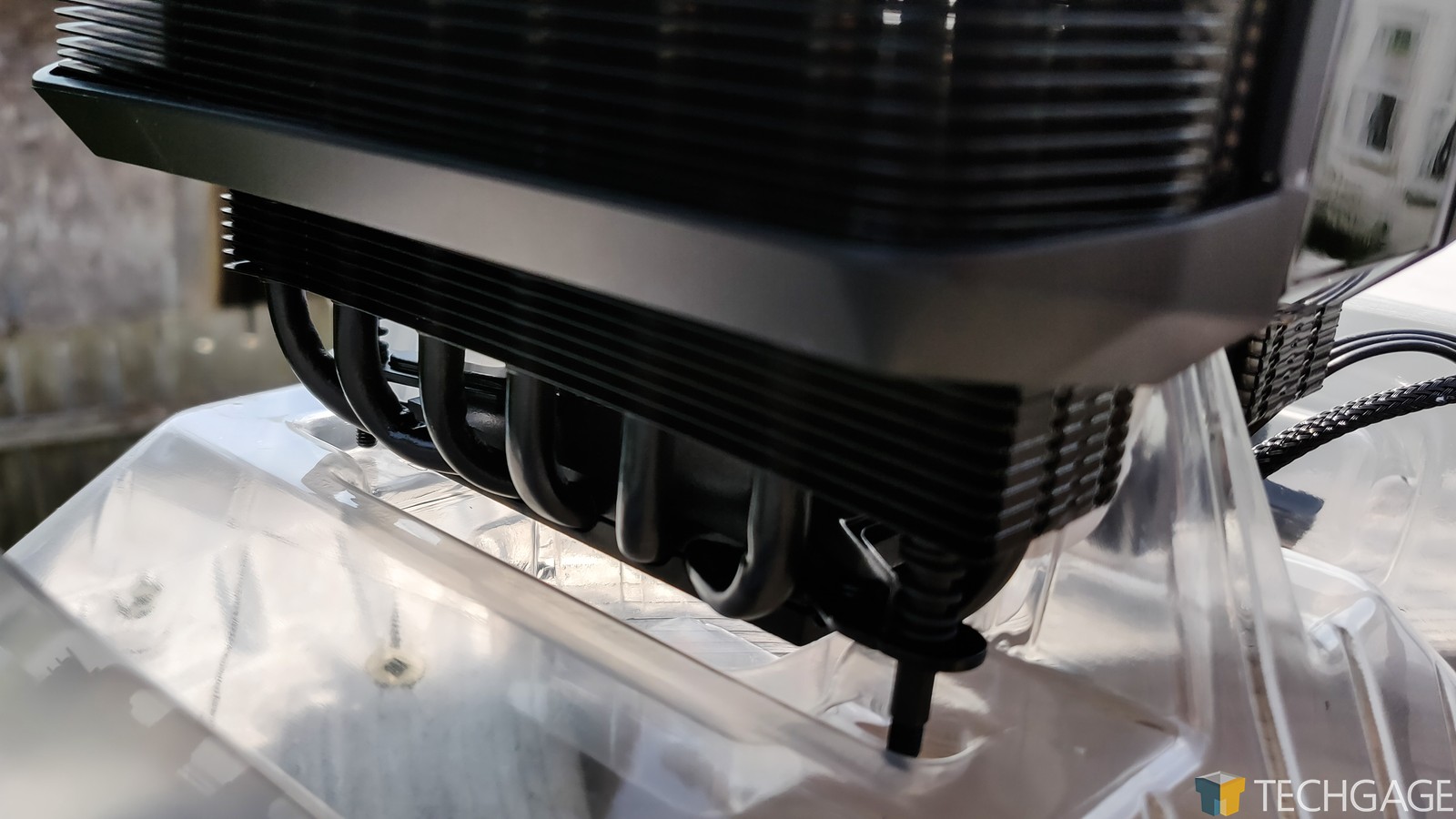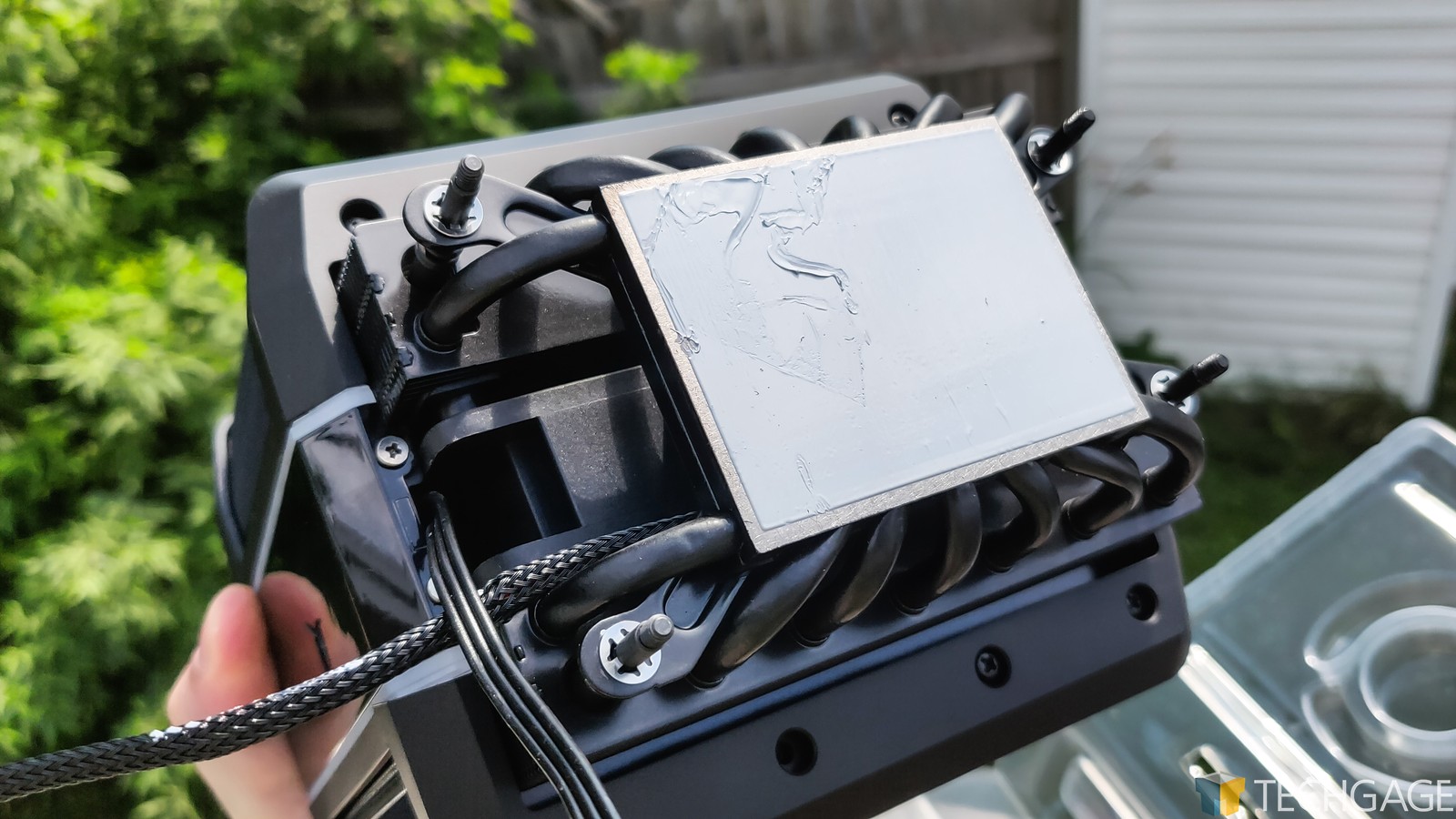- Qualcomm Launches Snapdragon 4 Gen 2 Mobile Platform
- AMD Launches Ryzen PRO 7000 Series Mobile & Desktop Platform
- Intel Launches Sleek Single-Slot Arc Pro A60 Workstation Graphics Card
- NVIDIA Announces Latest Ada Lovelace Additions: GeForce RTX 4060 Ti & RTX 4060
- Maxon Redshift With AMD Radeon GPU Rendering Support Now Available
Workstation Powerhouses: AMD Ryzen Threadripper 16-core 2950X & 32-core 2990WX Review

Just as we were starting to believe that 16-core CPUs were amazing, AMD has come along and dropped a 32-core bombshell. It’s called Ryzen Threadripper 2990WX, a workstation chip that cuts through renderers like butter. We’re putting it up against the forthcoming 2950X, and six other unsuspecting processors.
Page 1 – AMD Ryzen Threadripper 16-core 2950X & 32-core 2990WX Review
AMD’s newest Ryzen Threadripper processors haven’t been kept much of a secret, and if you’ve followed the progression of Ryzen’s second-generation chips, you pretty much know what to expect from the new top-end 2000-series SKUs. In a nutshell, we have 12nm dies, better clocks, greater efficiency, and… thirty-two freaking cores!
Let’s rehash some history. Ahead of summer 2017, the most powerful desktop processor someone could buy was the 10-core Intel Core i7-6950X, priced at $1,750. The following summer, AMD released its Ryzen Threadripper 1950X, boasting 16 cores for $999. At the time, and even right now, 16 cores is impressive. But here we have a chip with twice the number of cores and threads. I didn’t think AMD would do it, but here we are. This current era of AMD is beyond aggressive, and it’s exciting.
Consider this. Intel’s first six-core CPU was the i7-980X, released back in 2010. It took four years from that point to see a core increase. It came to us in the form of the eight-core i7-5960X Extreme Edition. Things began to accelerate from that point on, giving us the 10-core i7-6950X in 2016. AMD gave us its 16 cores in 2017 (Intel gave us 18, to give credit there), and now, AMD is giving us 32. I’m still in relative awe here.
The question must be raised: “What about EPYC?” EPYC was the reason I thought this 32-core chip wouldn’t happen, at least so soon. But, EPYC is different, as is all enterprise-level gear. It adheres to many different certifications and processes, and not to mention supports an eight-channel memory controller. You can also combine two chips in the same server unit, something Threadripper can’t do (it wouldn’t surprise me if AMD changed that with TR3, because I’m done thinking ‘not happening’ to everything that sounds too good to be true).
“But isn’t $1,799 a bit low for a market-leading processor?” I’ve mulled this a bit, and do admit I thought AMD should have charged more for this chip than it has. I’ve come to the conclusion, though, that AMD is actually just doing the market at large a favor by forcing a long-overdue CPU pricing recalibration. A 10-core chip shouldn’t have cost people $1,750 a mere two years ago.
Before moving too much further, here’s a look at AMD’s product stack as it currently stands… but please note that the 2970X and 2920X are due in October. The 2950X, meanwhile, is due at the end of the month, whereas the biggest chip, 2990WX, is available right this moment.
| AMD’s Current-gen Ryzen Processor Lineup | ||||||
| Cores | Clock (Turbo) | L2+L3 | Memory | TDP | Price | |
| Threadripper WX-series | ||||||
| 2990WX | 32 (64T) | 3.0 GHz (4.2) | 16+64MB | Quad | 250W | $1799 |
| 2970WX | 24 (48T) | 3.0 GHz (4.2) | 12+64MB | Quad | 250W | $1299 |
| Threadripper X-series | ||||||
| 2950X | 16 (32T) | 3.5 GHz (4.4) | 8+32MB | Quad | 180W | $899 |
| 2920X | 12 (24T) | 3.5 GHz (4.3) | 6+32MB | Quad | 180W | $649 |
| Ryzen 7 | ||||||
| R7 2700X | 8 (16T) | 3.7 GHz (4.3) | 4+16MB | Dual | 105W | $329 |
| R7 2700 | 8 (16T) | 3.2 GHz (4.1) | 4+16MB | Dual | 95W | $299 |
| Ryzen 5 | ||||||
| R5 2600X | 6 (12T) | 3.6 GHz (4.2) | 3+16MB | Dual | 95W | $219 |
| R5 2600 | 6 (12T) | 3.4 GHz (3.9) | 3+16MB | Dual | 65W | $189 |
| R5 1600X | 6 (12T) | 3.6 GHz (4.0) | 3+16MB | Dual | 95W | $219 |
| R5 1600 | 6 (12T) | 3.2 GHz (3.6) | 3+16MB | Dual | 65W | $189 |
| R5 1500X | 4 (8T) | 3.5 GHz (3.7) | 2+16MB | Dual | 65W | $174 |
| R5 1400 | 4 (8T) | 3.2 GHz (3.4) | 2+8MB | Dual | 65W | $169 |
| Ryzen 3 | ||||||
| R3 1300X | 4 (4T) | 3.5 GHz (3.7) | 2+8MB | Dual | 65W | $129 |
| R3 1200 | 4 (4T) | 3.1 GHz (3.4) | 2+8MB | Dual | 65W | $109 |
| Ryzen w/ Radeon Vega Graphics | ||||||
| R5 2400G | 4 (8T) | 3.6 GHz (3.9) | 0.5+4MB | Dual | 65W | $169 |
| R3 2200G | 4 (4T) | 3.5 GHz (3.7) | 0.5+4MB | Dual | 65W | $99 |
Due to the fact that I spent about 80 hours the past week performance testing, and have a SIGGRAPH conference looming, I am not going to get into the nitty-gritty here as much as I’d like, but that doesn’t apply to the test results. There are some 35 graphs in this review, tackling many different scenarios.
SIGGRAPH is a professional visualization conference that brings in the world’s brightest workstation users to the west coast to talk shop and promote their wares. AMD will be doing just that at the event, because this 32-core chip is perfectly suited for that audience. To be absolutely clear, the 2970WX and 2990WX are not for gamers; they’re for workstation users (or anyone who needs cores more than IPC). We’re testing tens of thousands of dollars worth of workstation software here, not $60 games.
In the reviewer kit AMD sent press, the company included Cooler Master’s new Wraithripper cooler, one that was designed specifically for this product. Interestingly, Cooler Master had begun design work on the cooler before there was ever an intention to make it an official cooler. When the company talked to AMD about its creation, the idea was hatched, and the rest is history.
It’s hard to believe that an air cooler is marketed towards a CPU series that offers 32-core SKUs, and it’s a testament to the fact that AMD has actually made an efficient CPU architecture with Zen (and subsequently, this Zen+). I am being extremely serious when I say that when I ran all of my benchmarks, I was never concerned about temperatures when using this air cooler. I mean sure, it’s massive, but I use water (NZXT Kraken) to cool the top-end Core X-series chips, and I actually need more cooling ability than I have. If you need an example, the PC crashed during the AVX-512-powered Sandra test with the i9-7960X, entirely because of heat. After using NZXT’s software to manually crank the fan and pump to max, the issue disappeared. Meanwhile, I’m using this Wraithripper air cooler to handle the 32-core PC beside it.
I am not a cooling genius, so I’ll let those who actually know what they’re doing relay their thoughts. As far as I am concerned, though, the Wraithripper is more than capable for this job. Even during stress, the fins don’t get too hot to touch.
And with that, the next page is going to go over our testing methodology, and the five systems used for testing eight processors. After returning from AMD’s Italy press event a couple of weeks ago, I overhauled our test suite, and chose the eight most relevant processors for this kind of performance look. So… enough said; let’s just get a move on:
Support our efforts! With ad revenue at an all-time low for written websites, we're relying more than ever on reader support to help us continue putting so much effort into this type of content. You can support us by becoming a Patron, or by using our Amazon shopping affiliate links listed through our articles. Thanks for your support!




